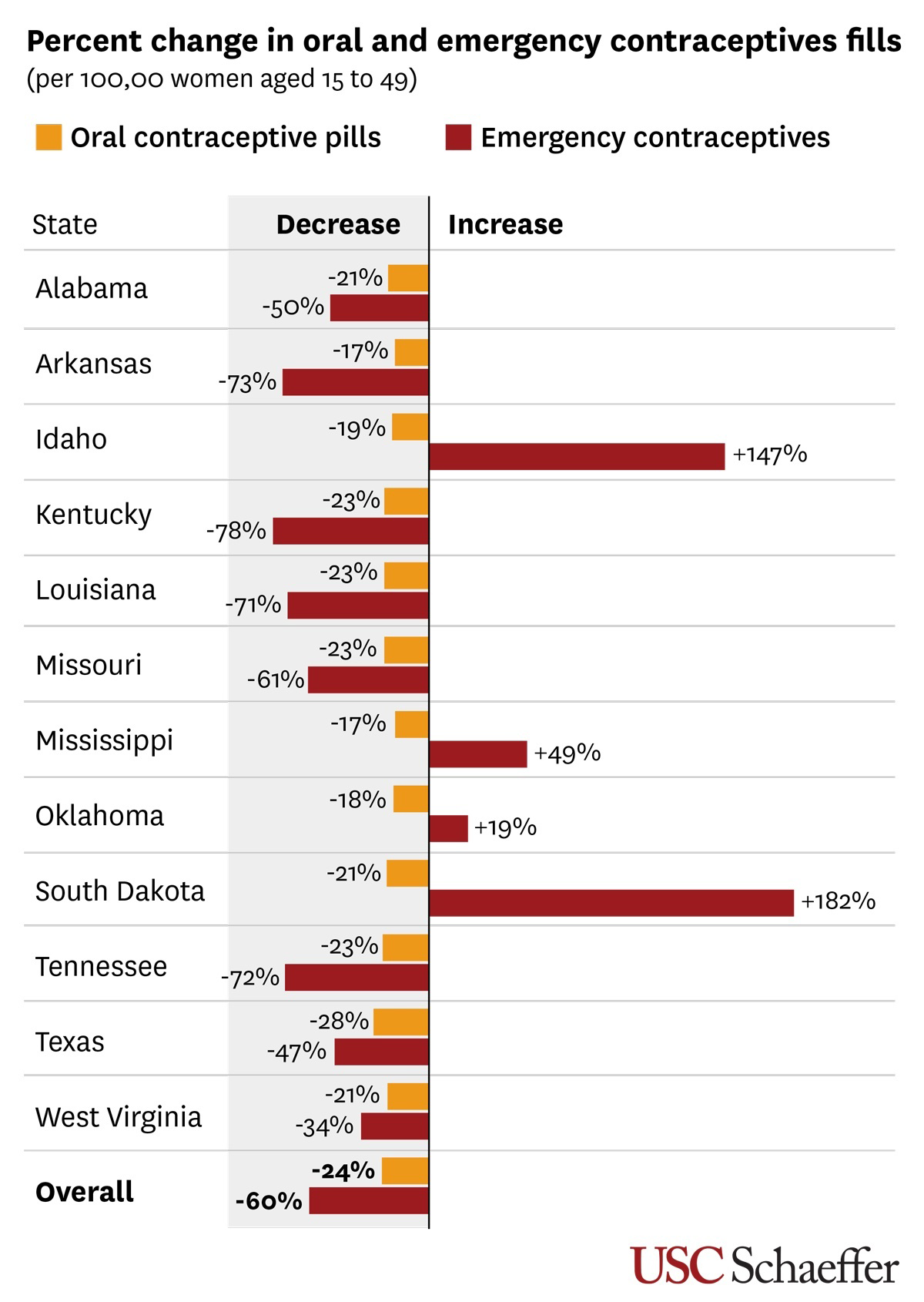
In the wake of the Supreme Court’s June 2022 Dobbs decision, as dozens of abortion clinics shut down in states with total or near-total abortion bans, reproductive justice advocates warned that the closures wouldn’t just affect patients seeking to terminate their pregnancies. Family planning clinics have historically provided more than abortion services, often offering basic gynecological health care for women. Indeed, more than 1 in 10 women get their birth control from these clinics, including those that also provide abortions. For low-income patients and people of color, the numbers are closer to one 1 in 5. Without access to affordable and reliable contraception, many more women were bound to become pregnant, whether they liked it or not. And without abortion as an option, many of them would be forced to carry unwanted pregnancies to term.
Now, in the first research to look at national trends in the use of birth control pills and emergency contraceptives in the post-Roe v. Wade era, a University of Southern California study has found evidence that those warnings were warranted. The analysis of what is known as “prescription-fill” data from retail pharmacies across the US found that states with the most draconian abortion policies saw significant declines in the number of birth control prescriptions filled, especially for emergency contraception.
The study covered the period from March 2021 through October 2023, when approximately 143 million prescriptions for birth control pills—the most common form of birth control in the US, after sterilization—and 900,000 prescriptions for emergency contraceptives were filled. Researchers broke down the analysis into several time periods before and after Dobbs, and compared states that implemented total bans post-Dobbs with states that had significant restrictions before the ruling but subsequently did not enact full bans.
Well before Dobbs, birth control prescription fills were steadily falling across the country, the study notes. This likely reflects both a trend toward long-acting reversible contraception such as IUDs and patients filling prescriptions for up to 12 months at a time. Before Roe’s reversal, monthly patterns in prescription rates for oral and emergency contraception were similar among the most restrictive and least restrictive states.
After the decision, however, the researchers found that states that enacted the most restrictive laws experienced a 24 percent total decline in oral contraceptive prescriptions filled. Texas, where more 6.9 million women are of childbearing age (more by far than in any other abortion-ban state), was the state with the lowest fill-rate. Prescriptions there for birth control pills dropped by 28 percent.

Closures of family planning clinics “contributed to some of these declines, for sure,” says the study’s lead author, Dima M. Qato, an associate professor at the University of Southern California’s Mann School of Pharmacy and Pharmaceutical Sciences. “Many low-income women, whether uninsured or on Medicaid, rely on [such clinics] for prescriptions for their contraception. So if those clinics are no longer available, they’re not getting prescriptions to fill at pharmacies.” According to new data from the Guttmacher Institute, post-Dobbs abortion bans led to the shutdown of 63 abortion clinics in 14 states—including 24 clinics in Texas alone.
The trends in prescription–fill rates for emergency contraceptives such as Plan B and Ella were markedly different from regular birth control pills, the study found. Starting around December 2021, during the period when the Supreme Court was weighing the Dobbs case, prescriptions for emergency contraceptives jumped nationally, likely because, in anticipation of access to abortion being radically curtailed people stockpiled supplies; the fill-rate peaked in July 2022, immediately after the ruling.
But a year after Dobbs, emergency contraception prescriptions in states with full abortion bans plummeted 60 percent overall compared with the pre-Dobbs period. In Kentucky, the state with the biggest decrease, prescription fills were down 78 percent; by contrast, in Idaho, the only extreme-ban state that allows pharmacists to prescribe emergency contraceptives without age restrictions, the post-Dobbs fill-rate rose by 148 percent. “Confusion around the legality of emergency contraception could be contributing to multiple factors that could drive this [prescription] decline,” Qato says, including “doctors not wanting to prescribe it as much, pharmacies not wanting to carry or dispense it, and patients afraid to use it for fear of liability.”
Anti-abortion groups have long opposed emergency contraceptives, falsely claiming they are abortifacients and inaccurately conflating them with medication abortion—a drumbeat of disinformation that has become more insistent since Dobbs. As my colleague Julianne McShane has written, Republicans are laying the groundwork to dramatically scale back access to birth control if Donald Trump is reelected, starting with Plan B. A KFF survey in January 2023 found that half of women in full-ban states believed Plan B was illegal where they lived.
One thing the study doesn’t address is whether some women in abortion-ban states might have switched to getting their birth control pills, Plan B, and Ella from online sources—or whether they might have opted for IUDs or even sterilization for themselves or their partners. It’s a question that numerous reproductive health researchers around the country are scrambling to answer. Qato worries that many women in abortion-ban states are being forced to do without. More efforts to improve and protect access to oral contraceptives are urgently needed, especially emergency contraceptives, she says. “For many women, they are really the last safe and effective option to prevent a pregnancy and prevent the need for an abortion in states where abortion is no longer legal.”















